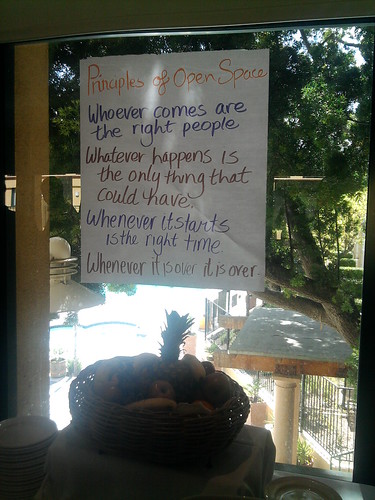But then, there's this whole fiasco about trying to impose single identities that always consist of two space-separated UTF-8 strings containing only alphabetical characters, that seem normal to someone from Palo Alto.

Yeah, just like that. Which reminds me of a story. Not so long ago, I was talking to the Google product manager for GMail, during - yes - an open-space workshop on privacy and identity issues. He (and he certainly is compliant with the policy sketched out above) asked if anyone knew why GMail lets you pick a graphical skin, basically a user stylesheet, for your account. After all, they spent millions on the pretty UI, so why would you want to do that?
Apparently the idea came from one of the UI/UX designers. Who said that it should be possible to tell at a glance which one of several GMail accounts you were using. The programmers and network engineers of course didn't get it - why the hell would you want two GMail accounts? Hadn't they just spent quite a lot of time and money and hard work building an e-mail service that you'd actually want to use? Wasn't it a major design goal of the whole project that people would want to pipe their other e-mail accounts into GMail, far from creating more e-mail accounts? And surely, if you wanted to keep e-mail associated with different people or things or themes together, you could use labels, and set up filters to automate the distinction?
To which she said that if you have one privacy context that includes your thuggish ex-husband and his lawyer and your fundamentalist Christian teabagger mum, another that includes your high-functioning asperger's coder boss and various similarly brilliant-but-awkward nice-guy types from work, and yet a third that includes your actual and very irreligious friends, the consequences of wrong-slotting an e-mail were far more serious than just posting to the dev list when you meant the user list or vice versa. Therefore, sometimes you needed a non-permeable membrane between contexts and a suitably glaring visual distinction.
A slow dawn spread across the meeting, someone pointed out that after all it was just an alternative CSS sheet technically speaking, and skins were added to the feature list for the next deploy. (Like the green-screen theme for GMail? Thank feminism.)
Now, it doesn't look like she's been consulted on this particular project, and I think her input would probably be worth having. But then the feminists would have something to say about why nobody seems to have asked. Actually, although our Googler didn't name names and I therefore won't name him, a bit of lateral thinking suggests her career appears to have developed in a manner to her advantage, so perhaps it's one for the theory of bureaucracy instead.
No comments:
Post a Comment